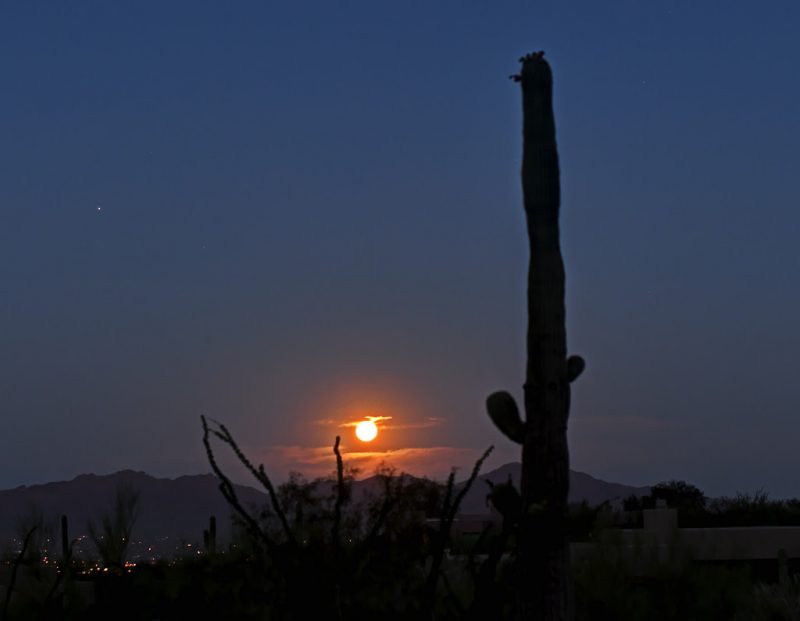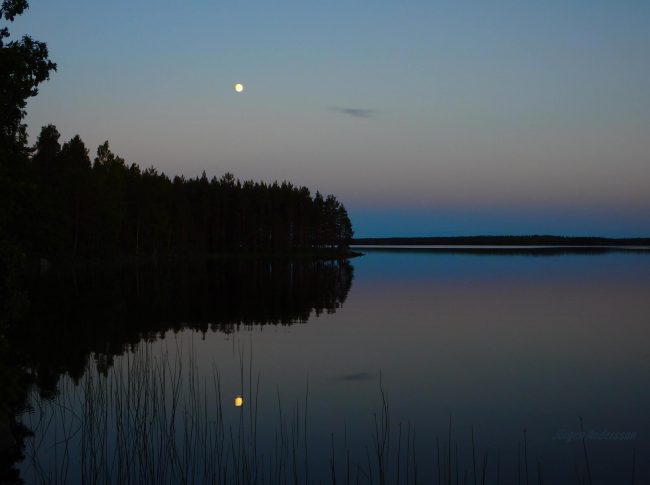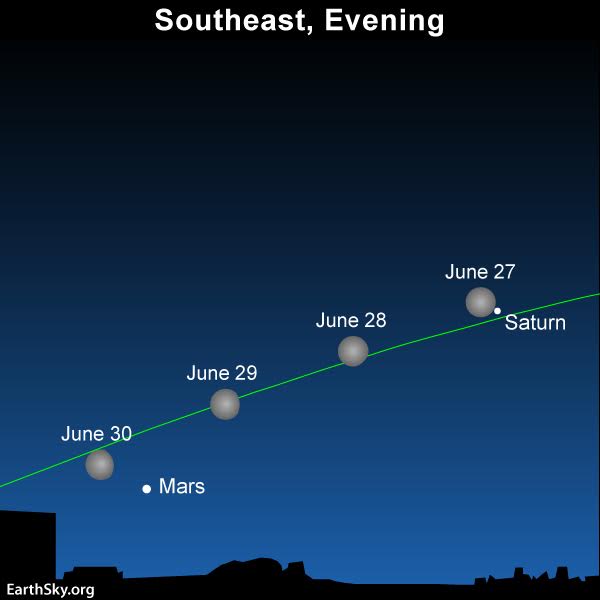On June 27 and 28, 2018, find the full moon – called the Rose Moon, Flower Moon or Strawberry Moon, and the Oak Moon, Cold Moon or Long Night’s Moon from the Southern Hemisphere – and look in the moon’s glare for a starlike point. That point is a planet, Saturn.
Then, as the chart at top shows, you’ll want to keep watching. Before June ends, the waning gibbous moon will pair up with the red planet Mars, now dramatically bright in our sky and headed for its closest and brightest since 2003.
As our Earth turns underneath the heavens on these June nights, this month’s full moon and Saturn will move westward across your sky. As seen from the whole Earth, the twosome will climb highest up for the night around midnight, and will sit low in the west at dawn on June 28 and 29.


The moon turns precisely full on June 28, 2018, at 4:53 Coordinated Universal Time (UTC). The moon reaches its full phase less than one day (about 16 hours) after Saturn reaches opposition, marking the middle of the best time of year to see the ringed planet. This year, in 2018, Saturn reaches opposition on June 27, at 13:00 Coordinated Universal Time (UTC), and the moon turns full some 16 hours later, on June 29, at 4:53 UTC. Since Saturn’s opposition and the full moon occur in close proximity in 2018, the night of June 27-28 features the moon and Saturn together all night long.

Although the full moon occurs at the same instant worldwide, the clock reading varies by time zone. June 28 at 4:53 UTC translates to June 28 at 12:53 a.m. Eastern Daylight Time (EDT). Thus, at all the U.S. time zones to the west of EDT, the moon turns precisely full on Wednesday, June 27, at 11:53 p.m. CDT, 10:53 p.m. MDT, 9:53 p.m. PDT, 8:53 p.m. AKDT (Alaska Daylight Time) and 6:53 p.m. HST (Hawaiian Standard Time). Translate June 28 at 4:53 UTC to your time.
So the date of the June 2018 full moon depends on your time zone. From the most of the contiguous U.S., the moon turns full on the evening of June 27. From Portugal and the western portions of Africa, the instant of full moon occurs before sunrise June 28. For Asia, Indonesia, Australia, New Zealand and the most of Europe, the moon turns full during the daylight hours on June 28, at which time the sun is above the horizon and the moon is below it. See the worldwide map below.
Enjoying EarthSky so far? Sign up for our free daily newsletter today!

Bottom line: Saturn is the bright object near the full moon on June 27 and 28, 2018.
Help EarthSky keep going! Please donate what you can to our annual crowd-funding campaign.












